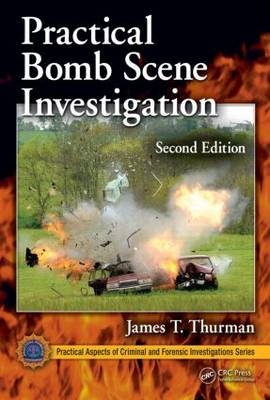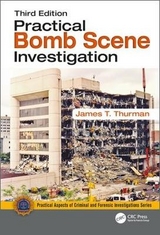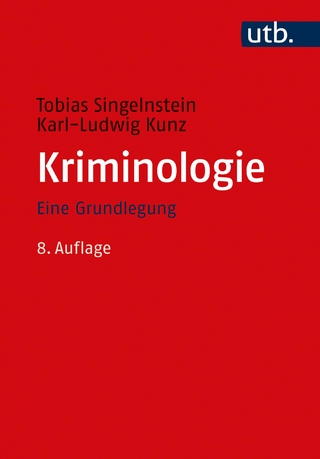
Practical Bomb Scene Investigation, Second Edition
Taylor & Francis Inc (Verlag)
978-1-4398-1959-3 (ISBN)
- Titel erscheint in neuer Auflage
- Artikel merken
New in this Edition:
Information on detonation pressure and its effects on the body
Instructions on how to collect additional information from the scene in order to provide an estimate of the explosives weight of the IED
A glossary for a more in-depth understanding of the terms associated with explosives and the investigation processes
A greatly expanded IED component identification chapter
A chapter on how to expeditiously investigate a post-blast scene in a hostile environment
Information on how to prepare an Investigative Report
James T. Thurman has worked in the explosives field for more than 30 years, first as a U.S. Army bomb disposal technician and then as a special agent with the FBI. He continues to lecture and provide training on the methods of bomb scene investigation and explosives avoidance to domestic and international training schools and audiences. He is currently a professor at the Eastern Kentucky University, teaching a unique academic program on fire, arson, and explosion investigation. He holds a BA from Eastern Kentucky University and an MS Degree in Forensic Science from the George Washington University.
Explosion Theory and Dynamics
Introduction
Scientific Method
Explosives
Types of Explosives
Classification and Sensitivity of Explosives
Explosive Performance
Firing Trains
Additional Characteristics of Explosives
Accountability of Explosives and Explosives Detection
Explosions
Types of Explosions
Explosion Effects
Explosion Scene Investigation
Summary
Review Questions
References and Additional Reading
Identification and Recognition of Commercial, Improvised, and Military Explosives
Introduction
Short History of Explosives
Low Explosives
Black Powder
Pyrodex
Photoflash Powder
Smokeless Powder
Commercial High Explosives
Primary Explosives
Secondary Explosives
Water-Based Products
Water Gel or Slurry Explosives
Emulsion Explosives
Boosters
Binary Explosives
Sheet Explosives
Foreign Explosives
United States Military Explosives
Trinitrotoluene Charges (TNT)
Composition 4 (C-4)
Sheet Explosives
Military Dynamite
Improvised Explosives
Initiation Systems and Components
Initiators
Chapter Summary
Review Questions
References and Additional Reading
Improvised Explosive Device Components: Pre- and Post-Blast Identification
Introduction
Improvised Explosive Devices
Factors Affecting Improvised Explosive
Device Construction
Basic Components of the Improvised Explosive Device
Primary Effect Provided by Type of Improvised
Explosive Devices
Appearance of an Improvised Explosive Device
Components of the Improvised Explosive Device
Fuzing Systems
Investigative Process
Chapter Summary
Review Questions
References and Additional Reading
Investigation of the Explosion Scene and Collection of Evidence
Introduction
Investigative Outline
Initial Response
Evaluation of the Explosion Scene
Entering the Scene (Scene Investigation)
Documentation of the Explosion Scene
Where to Find Evidence at the Bomb Scene
How to Find Evidence at the Bomb Scene
How to Collect Evidence at the Bomb Scene
Special Situations for Evidence Collection
Final Survey
Release of the Scene
Summary
Review Questions
References and Additional Reading
Bomb Scene Investigator and Weapons of Mass Destruction
Introduction
Types of Weapons of Mass Destruction
Nuclear, Biological, and Chemical Materials
Nuclear Materials
Biological Materials
Chemical Agents
Weapons of Mass Destruction Hazards
Determining the Presence of Weapons of Mass Destruction
Weapons of Mass Destruction Protection Methods
Key Issues for Investigating a Weapons of Mass Destruction Scene
Preincident Planning
Determining Whether a WMD Was Used
Assessing Scene Control and Security
Ensuring That Appropriate Protection Methods Are Employed
Addressing Immediate Life Safety Hazards
Contacting Appropriate Outside Agencies for Assistance
Identifying and Preserving Evidence
Summary
Review Questions
References and Additional Reading
Introduction to the Identification of Military Ordnance
Introduction
Definitions
Physical Characteristics of Military Ordnance
Identification Features of Military Ordnance
Dropped Ordnance
Projected Ordnance
Thrown Ordnance
Placed Ordnance
Chapter Summary
Review Questions
References and Additional Reading
Capabilities of the Forensic Laboratory: Reading the Bomber’s Signature
Introduction
Laboratory Capabilities in the Examination of Improvised Explosive Devices
Device Reconstruction
Explosive Residue Analysis
Latent Fingerprint Examinations
Materials Analysis
Document Examinations
Toolmark Examinations
Metallurgical Examinations
DNA Analysis
Reading the Bomber’s Signature
Introduction
Chapter Review
Review Questions
References and Additional Reading
Tactical Post-Blast Investigation
Introduction
Tactical Scene Investigative Outline
Organization of the Investigative Team:
Personnel and Equipment
Route Security and Access to the Scene
Scene Assessment
Scene Investigation: Documentation,
Collection of Evidence, and Witness Interviews
Final Survey
Return to the Secure Zone
Summary
Review Questions
References and Additional Reading
Appendices
Index
| Erscheint lt. Verlag | 7.6.2011 |
|---|---|
| Reihe/Serie | Practical Aspects of Criminal and Forensic Investigations |
| Zusatzinfo | 10 Tables, black and white; 314 Illustrations, color |
| Verlagsort | Washington |
| Sprache | englisch |
| Maße | 178 x 254 mm |
| Gewicht | 1270 g |
| Themenwelt | Recht / Steuern ► Strafrecht ► Kriminologie |
| Wirtschaft | |
| ISBN-10 | 1-4398-1959-9 / 1439819599 |
| ISBN-13 | 978-1-4398-1959-3 / 9781439819593 |
| Zustand | Neuware |
| Haben Sie eine Frage zum Produkt? |
aus dem Bereich



